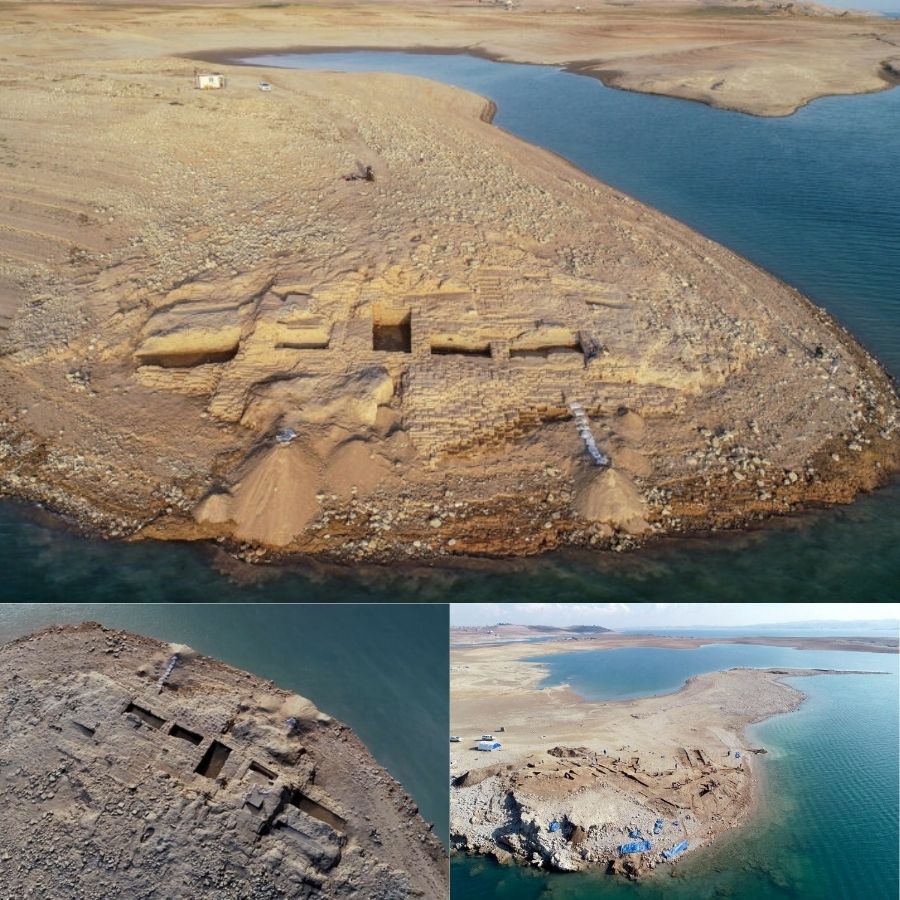A severe drought in Iraq has led to one of the most remarkable archaeological discoveries in recent years. As water levels dropped in the Mosul reservoir, a hidden chapter of ancient history emerged from the depths of the Tigris River. A 3,400-year-old city, believed to be Zakhiku, once part of the powerful Mittani Empire, resurfaced after spending millennia underwater. This unexpected revelation has reignited global interest in Mesopotamian civilizations, sparking a race among archaeologists to uncover its secrets before nature reclaims the site once more.

The city’s sudden reappearance prompted immediate action from a team of archaeologists from Germany and the Kurdistan region of Iraq. Understanding the fleeting opportunity at hand, experts swiftly mobilized, aware that the waters could rise again at any moment and conceal the ancient site once more. Within just a few days, a collaborative team was formed, and financial support was secured from the Fritz Thyssen Foundation through the University of Freiburg. Their goal was clear: excavate, document, and preserve as much as possible before the city vanished beneath the reservoir again.
Working under intense time pressure, the team embarked on a rigorous excavation and mapping project. Despite the challenges posed by the environment and the urgency of their mission, they made significant progress. The researchers managed to chart a considerable portion of the urban landscape, bringing to light an array of remarkable architectural features. Among their most impressive findings was a sprawling fortification system composed of walls and towers, suggesting that the city was once a well-defended and strategically important center. Adjacent to these defenses stood a monumental multi-story storage facility, indicating a high level of administrative and logistical organization. Not far from there, an expansive industrial complex hinted at a thriving economic base that once supported the city’s population.
Perhaps the most captivating discovery was the palace—originally spotted during a brief campaign in 2018 but fully revealed during this latest excavation. The palace’s size and elaborate design suggest it was a center of governance and perhaps even residence for a member of the ruling elite. Its construction speaks volumes about the architectural knowledge and social complexity of the Mittani civilization.
The excavation has not only unveiled buildings but has also provided extraordinary insight into the history of the Mittani Empire, which flourished between 1550 and 1350 BC. The empire once spanned large portions of northern Mesopotamia and parts of present-day Syria, serving as a major political and military force in the ancient Near East. Among the most valuable findings were five ceramic vessels containing more than 100 cuneiform tablets. These tablets date to the Middle Assyrian period, and their presence suggests that the city continued to be inhabited or at least used shortly after a catastrophic earthquake struck. This natural disaster likely played a role in the city’s decline, as evidenced by the state of the ruins and artifacts.
The cuneiform tablets are expected to offer further information about life in the ancient city, possibly shedding light on the administrative structure, economic activity, religious practices, or even diplomatic relationships of the time. Experts hope that once translated, these texts will reveal a deeper understanding of how the people of Zakhiku lived, governed, and adapted to the natural and political changes of their era.
Understanding the fragile nature of what had been uncovered, the archaeologists took extensive measures to preserve the site. The buildings—constructed primarily of unbaked clay bricks—are especially vulnerable to water damage. In an effort to safeguard their work and ensure the site’s long-term survival, the excavated structures were covered with plastic sheeting and filled with gravel. This conservation method, funded by the Gerda Henkel Foundation, is intended to protect the ruins during future submersions of the reservoir. Such measures are vital in a region where environmental conditions can change rapidly, and where archaeological resources are constantly at risk from both nature and human activity.
While the city has once again disappeared beneath the reservoir, its brief return to the surface has left a lasting legacy. The discoveries made during this short window of excavation have illuminated a crucial period in the history of Mesopotamia and the Mittani Empire. For historians and archaeologists, Zakhiku represents a treasure trove of knowledge, offering a rare and direct connection to a civilization that once thrived along the banks of the Tigris.
This unexpected discovery not only emphasizes the enduring mysteries still hidden beneath our modern landscapes but also highlights the importance of swift and well-supported archaeological response in times of environmental change. The work done by the dedicated team in Iraq demonstrates the powerful blend of scientific precision, historical curiosity, and cultural preservation that defines modern archaeology. As researchers continue to study the artifacts and data collected from Zakhiku, the story of this ancient city—and the people who once called it home—will continue to unfold, offering new perspectives on a bygone empire whose echoes still reach us through the sands of time.





